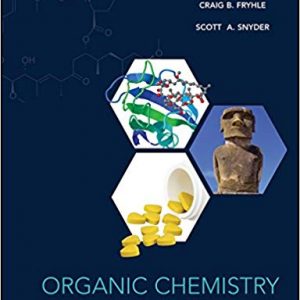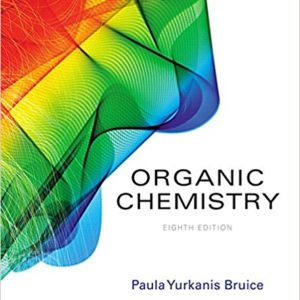Organic chemistry can overwhelm students and force them to fall back on memorization. But once they understand how to use mechanisms, they can solve just about any problem. With an organization by mechanism, students will understand more, and memorize less. The Organic Chemistry: Principles and Mechanisms 2nd Edition (pdf) is a groundbreaking textbook which provides a fresh, but proven approach to get college students confident using mechanisms.
Dr. Karty has developed a teaching approach and textbook that is organised by mechanism, promotes learning-by-doing, and provides undergrad students with the background and support they need to be successful in organic chemistry and beyond. Professors overwhelmingly agree that understanding, not memorising, reaction mechanisms is the key to success in this course. Most other textbooks are organised by functional groups: specific types of atoms and bonds, such as alkenes, that react in a similar way. Joel’s textbook is organized by mechanism, to emphasise not what reacts but how it reacts, carefully describing what happens in each step of the reaction.
Features include:
Understanding over memorisation. The mechanistic organisation of the ebook emphasises the importance of understanding reaction mechanisms. By seeing how and why particular reactions take place, college students learn how to use those reactions to carry out syntheses of specific molecules. Key to the organisation is Chapter 7, An Overview of the most Common Elementary Steps, which introduces college students to the 9 mechanisms they will see throughout the course.
An extended review of general chemistry topics. Most students rarely enter organic chemistry with the foundation they need to be successful. While topics like acids and bases and atomic structure were covered in general chemistry, most undergraduate and graduate students need more than a brief review. Chapters 1-6 provide that much needed review.
Connections to biochemistry and contemporary topics. The organic chemistry that students learn is applied toward biomolecules — proteins, carbohydrates, saccharides, and lipids — in optional, self-contained sections at the ends of most chapters. These sections reinforce topics encountered earlier in the chapter. Professors looking for ways to address the new MCAT 2015 guidelines will appreciate this feature. In addition, each chapter has applications boxes to show how the concepts in the chapter apply to students’ future careers and lives.
Smartwork5 online homework (sold separately) supports learning by mirroring the textbook’s organization and pedagogy. Undergrad students use an intuitive drawing tool while receiving instant hints and answer-specific feedback, making practice more productive.
NOTE: This only includes Organic Chemistry: Principles and Mechanisms 2e PDF. No online access codes are included.







Reviews
There are no reviews yet.